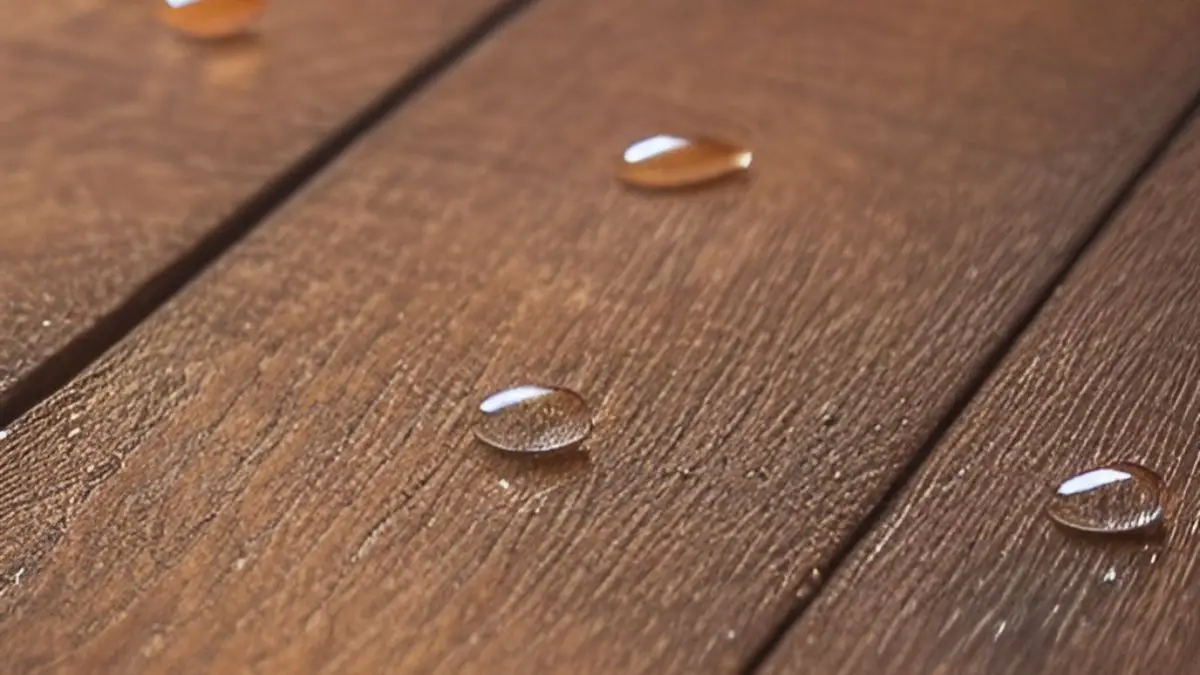Updated 3/24/2024
Known for its smooth surface, consistency, and ease of cutting and shaping, MDF has become a go-to material for many DIY enthusiasts and professionals alike.
However, its susceptibility to water damage can be a significant drawback, leading to swelling, warping, and deterioration when exposed to moisture.
This is where waterproofing is crucial, as it extends the lifespan and maintains the integrity of your MDF projects.
In this comprehensive guide, we will explore various techniques and products to effectively waterproof MDF, ensuring it withstands the test of time even in moisture-prone environments.
From selecting the right sealants and primers to step-by-step application processes, we’ll cover all you need to know to protect your MDF creations from the damaging effects of water.
Let’s get started!
Is MDF Naturally Waterproof?
MDF, or medium-density fiberboard, is engineered wood made from heat-pressed wood fibers. It’s known for being strong and dense yet easy to work with and cut.
However, one downside of MDF is that it’s very susceptible to water damage.
When MDF gets wet, it can swell, warp, and disintegrate. Waterproofing MDF will protect it from moisture and extend its lifespan.
Weatherproof vs. Waterproofing MDF
Though “weatherproof” and “waterproof ” are often used interchangeably, there is a big difference between weatherproofing and waterproofing.
Weatherproofing refers to making a material resistant to weather effects, such as sun damage or mold growth.
On the other hand, waterproofing means making a material impervious to water. So, if you want to protect your MDF from the elements, you’ll want to weatherproof it.
And if you’re looking to protect your MDF from water damage, you’ll want to waterproof it. Of course, the best way to protect your MDF is to do both!
How to Apply Waterproofing Sealant to MDF
To waterproof MDF, you’ll need a waterproof sealant. We recommend using a clear polyurethane sealant, like Minwax.
- Sand the surface of the MDF to ensure maximum adhesion.
- Next, apply a thin sealant layer to the MDF using a paintbrush or roller. Make sure to get into all the nooks and crannies.
- Allow the sealant to dry completely, then apply a second coat.
- Once the second coat is dry, your MDF piece is now waterproofed!
Tips for a Long-Lasting Waterproof MDF Seal
To ensure your waterproof seal lasts, follow these tips:
- Apply the sealant in a well-ventilated area.
- Use a high-quality sealant designed for waterproofing.
- Apply at least two coats of sealant, allowing each coat to dry completely before applying the next.
Frequently Asked Questions (FAQs)
Is MDF waterproof if painted?
While we recommend using a clear polyurethane sealant, you can also use a waterproofing paint or primer. Just make sure it’s designed for waterproofing and follow the manufacturer’s instructions.
Is MDF ruined if it gets wet?
If MDF gets wet, it can swell and break down. In addition, water can cause the resin binders to deteriorate, leaving the wood fibers vulnerable to damage. As a result, it is important to take care to avoid getting MDF wet. If your MDF becomes wet, you must dry it out as soon as possible to prevent further damage. You can do this by setting up fans or dehumidifiers in the room where the MDF is located. Once the MDF is dry, you may need to sand it down or replace it entirely, depending on the extent of the damage.
Can MDF survive outdoors?
MDF is not meant for outdoor use. Engineered with wood fiber, resin, and wax, the material will degrade quickly when exposed to direct sunlight or high humidity. The porous surface of MDF also makes it susceptible to mold and mildew growth.
Can you use exterior paint on MDF?
Yes. First, seal the MDF with a primer designed for porous surfaces. This will help close off the MDF’s pores and create a smooth surface for the paint to cling to. Next, choose an exterior paint that is suitable for use on wood. Apply several coats, allowing each one to dry thoroughly before adding another.

